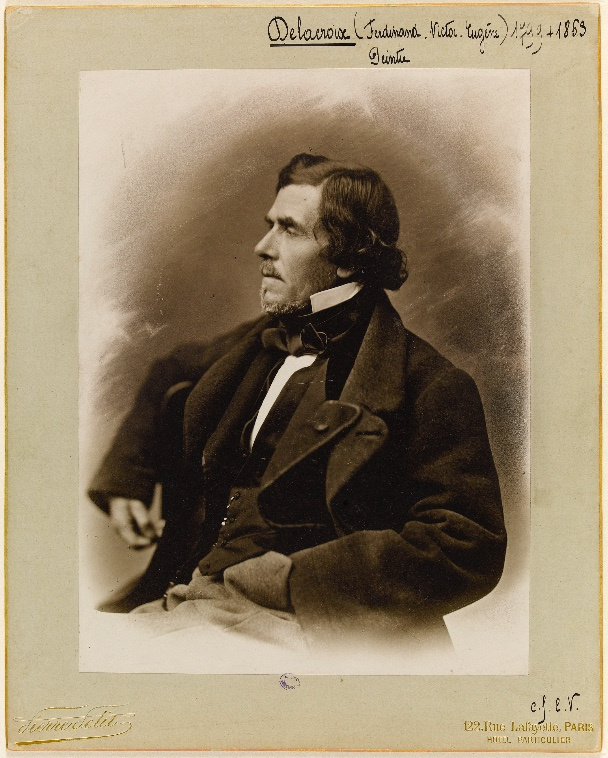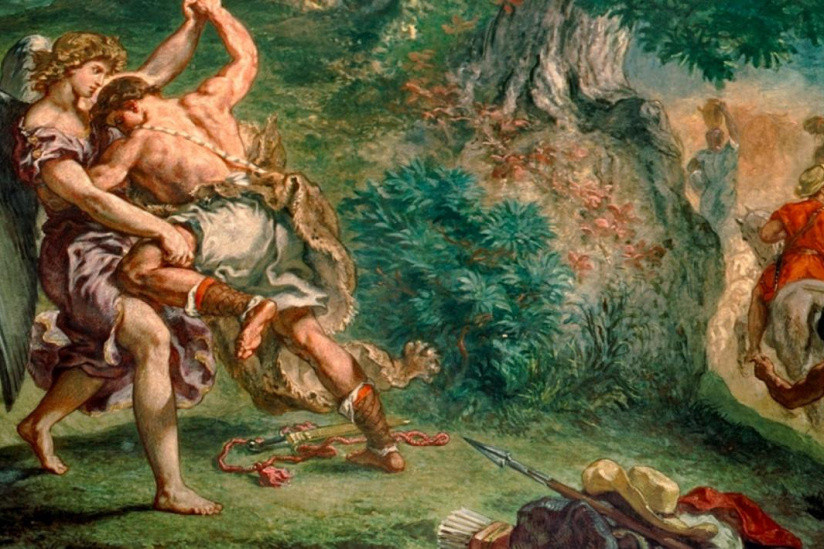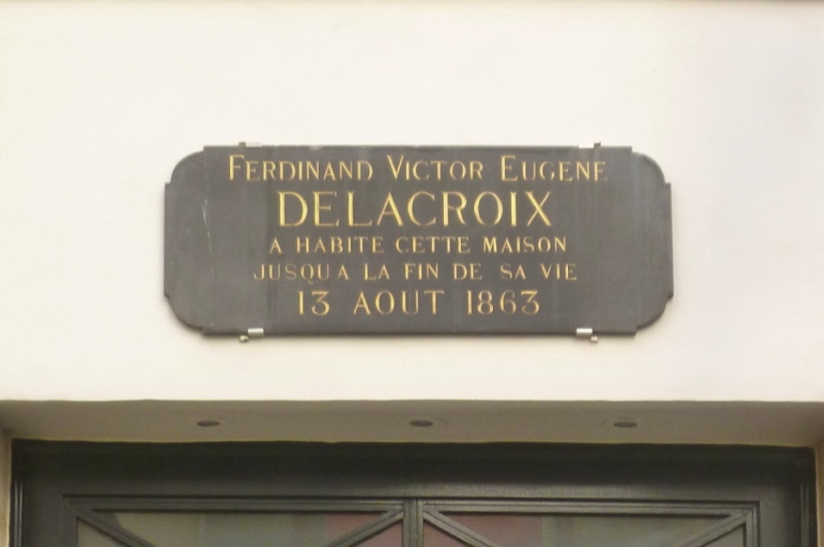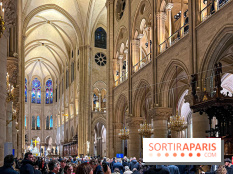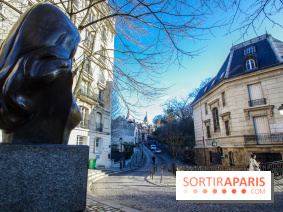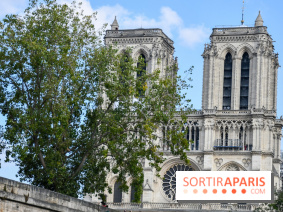In the early hours of August 13, 1863, Eugène Delacroix breathed his last at 6, rue de Furstemberg, in the apartment where he had moved in 1857, with only his housekeeper, Jenny Le Guillou, for company.
Eugène Delacroix arrived in Paris after a happy childhood with his father, Minister of Foreign Affairs and later Ambassador to Holland, and his mother, the daughter of a great cabinetmaker in the service of King Louis XV, and moved with her to rue de l'Université, where he attended the Lycée Impérial - now the Lycée Louis-le-Grand. Already passionate about drawing, in 1815 he entered the studio of painter Pierre-Narcisse Guérin, one of the leading artists' studios in Paris, with the support of his uncle, painter Henri-François Riesener .
Then only twenty, Eugène Delacroix presented his first major works at the Salon on several occasions: Dante et Virgile aux Enfers in 1822, Scène des Massacres de Scio in 1824, and Mort de Sardanapale in 1927. Quickly noticed by the critics, he fell into the category of Romantic painters and became one of the spearheads of a new generation of artists, inspired by the works of Raphael, Michelangelo and Rubens, but driven by a desire to overturn academic rules.
One of his most famous and masterful paintings, La Liberté guidant le peuple, inspired by the Parisian uprising of July 1830, was exhibited at the Musée du Luxembourg, then at the1855 Exposition Universelle in a show celebrating his work, before being acquired by the Musée du Louvre in 1874.
Throughout his life, Eugène Delacroix created monumental decors for various Parisian buildings, mainly religious: Christ in the Garden of Olives (1826) for the church of Saint-Paul Saint-Louis, a Pietà for the church of Saint-Denys-du-Saint-Sacrement, the decorations for the Salon du Roi in the Palais Bourbon in 1834, the ceiling of the Chambre des Députés in 1837 and the decor for the library of the Palais du Luxembourg in 1845.
He also designed the ceiling for the Galerie d'Apollon at the Musée du Louvre in 1850, the decorations for the Chapelle des Saints-Anges in the Church of Saint-Sulpice in 1849, for which he created the ceiling and two large murals, La Lutte de Jacob avec l'Ange and Héliodore chassé du temple, as well as the decorative paintings for the Salon de la Paix in theHôtel de Ville in 1854, which were unfortunately destroyed in 1871 when the Hôtel de Ville burned down during the Paris Commune.
After successively occupying ten homes and six studios in Paris,Eugène Delacroix passed away at 6 rue de Furstemberg on August 13, 1863. A mythical site with a verdant garden, it became the Musée Delacroix in 1932.
Location
Musée national Eugène Delacroix
6 Rue de Furstenberg
75006 Paris 6
Access
Metro line 10 "Mabillon" station
More information
Portrait of Eugène Delacroix by Pierre Petit. Carnavalet Museum
